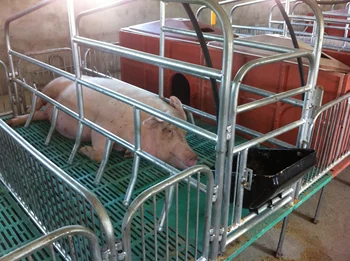Animal Feed Production Using Efficient Hammer Mill Technology for Optimal Processing
Nov . 07, 2024 16:42 Back to list
Animal Feed Production Using Efficient Hammer Mill Technology for Optimal Processing
The Role of Hammer Mills in Animal Feed Production
In the agricultural industry, the efficient processing of feed is critical for ensuring that livestock receive the necessary nutrients for growth and production. One of the essential pieces of equipment in this process is the hammer mill. The hammer mill is a versatile and efficient machine designed for grinding various types of materials, making it an indispensable tool for producing animal feed.
What is a Hammer Mill?
A hammer mill is a type of grinding machine that uses a series of hammers, which are attached to a rotating shaft, to crush and pulverize materials into smaller particles. The design of the hammer mill allows it to process a wide range of feed materials, including grains, seeds, and other agricultural byproducts. This capability is crucial for livestock farmers who need to produce consistent and high-quality feed for their animals.
How Hammer Mills Work in Feed Production
The operation of a hammer mill is straightforward. Feed materials are introduced into the mill through an inlet, where they are subjected to the impact of rotating hammers. The speed and force of these hammers break down the materials into smaller particles. The ground feed is then sifted through a screen, which ensures that the final granule size meets the specific requirements for the intended animal species.
The adjustable screens allow for versatility in particle sizes, making hammer mills suitable for different feed formulations. For instance, poultry feed may require a finer texture, while feed for larger livestock might be coarser. The ability to customize the particle size is crucial in optimizing feed digestibility and nutrient absorption in animals.
Benefits of Using a Hammer Mill for Animal Feed
1. Efficiency Hammer mills operate at high speeds, allowing for rapid processing of large quantities of feed. This efficiency is vital for commercial feed production, where time and quantity are important.
animal feed hammer mill

2. Cost-Effectiveness By enabling the use of various raw materials – including low-cost agricultural byproducts – hammer mills help reduce feed production costs. This aspect is particularly beneficial for farmers looking for affordable feeding solutions.
3. Improved Feed Quality The grinding process performed by hammer mills can enhance the digestibility and nutritional value of the feed. By reducing particle size, the feed becomes easier for animals to consume and digest, leading to better growth rates and overall health.
4. Versatility Hammer mills can handle a wide range of materials, from grains and legumes to fibrous and high-moisture feeds. This versatility allows farmers and feed manufacturers to adapt their formulations according to market demand or availability of raw materials.
5. Easy Maintenance Modern hammer mills are designed with user-friendly features that make maintenance straightforward. Regular maintenance not only prolongs the life of the equipment but also ensures consistent performance.
Considerations When Choosing a Hammer Mill
When selecting a hammer mill for animal feed production, several factors should be considered. The capacity of the mill needs to match the scale of the operation, and it should be able to process the specific types of feed materials required. Furthermore, attention should be given to the power requirements, as energy efficiency can significantly impact operating costs.
Another important consideration is the durability and construction of the hammer mill. Equipment made of high-quality materials will withstand the rigors of continuous operation and provide reliable performance over time.
Conclusion
In summary, hammer mills play a pivotal role in the production of animal feed. Their ability to efficiently grind a variety of materials into the desired particle size enhances the nutritional quality of the feed, making them an essential tool for livestock farmers and feed manufacturers alike. With their versatility, cost-effectiveness, and ease of maintenance, hammer mills are key to ensuring that animals receive the best possible nutrition for optimal growth and production. As the agricultural industry continues to evolve, the importance of such innovative solutions will only increase, highlighting the vital role of hammer mills in sustainable feed production.
-
Hot Sale 24 & 18 Door Rabbit Cages - Premium Breeding Solutions
NewsJul.25,2025
-
Automatic Feeding Line System Pan Feeder Nipple Drinker - Anping County Yize Metal Products Co., Ltd.
NewsJul.21,2025
-
Automatic Feeding Line System Pan Feeder Nipple Drinker - Anping County Yize Metal Products Co., Ltd.
NewsJul.21,2025
-
Automatic Feeding Line System - Anping Yize | Precision & Nipple
NewsJul.21,2025
-
Automatic Feeding Line System - Anping Yize | Precision & Nipple
NewsJul.21,2025
-
Automatic Feeding Line System-Anping County Yize Metal Products Co., Ltd.|Efficient Feed Distribution&Customized Animal Farming Solutions
NewsJul.21,2025






